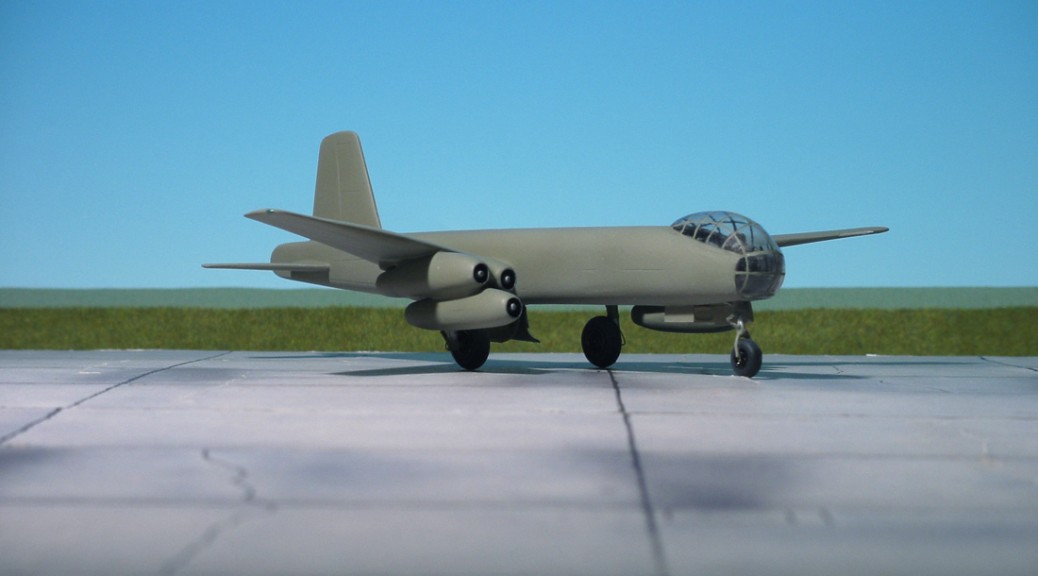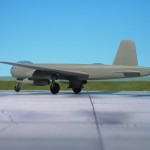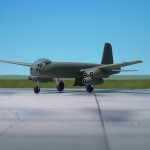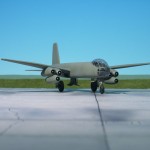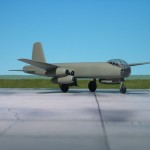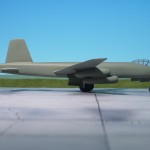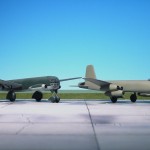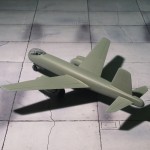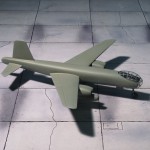TYPE: High speed bomber,
ACCOMMODATION: Crew of three
POWER PLANT: Six Junkers Jumo 004B-1 turbojet engines, rated at 950 kp each
PERFORMANCE: 534 mph
COMMENT: The Junkers EF 131 was, in essence, a hybrid airframe built from the components of the Junkers Ju 287 V2 and V3 of the Luftwaffe’s radical forward-swept-wing jet bomber. The V2 was nearly complete at the time of its capture by Soviet forces in 1945, and was taken into Red Air Force hands under military intelligence supervision along with the skeletal airframe of the barely-started V3. The V3 was to have been the first Ju 287 to be made to pre-production model specifications, and the eventual EF-131 was almost identical to it in terms of overall design. The airplane was completed and briefly test flown in the Soviet zone of occupied Germany, before being dismantled and transported to GOZ-1 (Gosoodarstvenny Optnyy Zavod – state experimental plant), at Dubna near Moscow. OKB-1 at GOZ-1 was formed with Dr. Baade as the chief designer, and a very talented team of German engineers seconded by the Soviet government. Extreme pressure was applied to get the aircraft ready to appear in the 1947 Aviation Day fly-past at Tushino airfield, but several factors combined to prevent the EF-131 from appearing. Flight testing in the USSR began on 23 May 1947, at the LII airfield, after the airframe had been strengthened. The first flight resulted in the port undercarriage collapsing due to a bolt failure, subsequent flight tests revealed major deficiencies such as nose wheel shimmy and tail surface vibration. Rectification of the defects caused many delays but the worst delays were caused by bureaucracy when it was decreed that foreign workers could not work at the LII airfield. The aircraft sat at LII over the winter but the harsh conditions caused the deterioration of rubber components and wiring, which required lengthy repairs. Preparations for resuming flight tests were almost complete in June 1948 when Ministry of Aircraft Industry ordered that further work on the EF-131 be discontinued. The Junkers EF-131 had become obsolete as newer Soviet-built engines with better performance became available (Ref.: 24).
